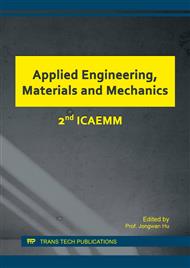p.303
p.310
p.316
p.321
p.326
p.331
p.337
p.349
p.354
CPPM: A Logical Architecture for the Cyber-Physical Production Model
Abstract:
Cyber-Physical Systems (CPS) are not a fad anymore, they are changing the way industries and companies plan and model their businesses in a distributed, dynamic, service-oriented way using virtualized resources that are scalable and accessed over the Internet. This change raises new challenges and opportunities for companies. In the last decade the industrial automation field has been introducing important technologies that are changing and integrating the Internet and other emerging technologies, concepts, methods and tools, such as cloud computing, agents and Service Oriented Architecture (SOA). These new approaches are resulting in the convergence of the physical world and the virtual world (cyberspace) in the direction of Industry 4.0. Industries are being forced to change and manage their IT and automation services through IT-enabled services to use new paradigms, and huge efforts of R & D are being made in this field. It is clear that in order to change the automation state many possibilities and paradigms are on the table. This work introduces a logical architecture for a cyber-physical production model, intending to help organizations adopting cyber- physical based services.
Info:
Periodical:
Pages:
326-330
Citation:
Online since:
October 2017
Authors:
Price:
Сopyright:
© 2017 Trans Tech Publications Ltd. All Rights Reserved
Share:
Citation:


